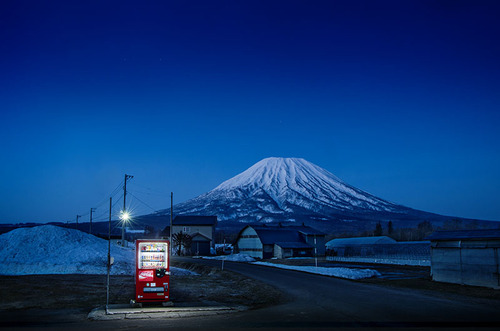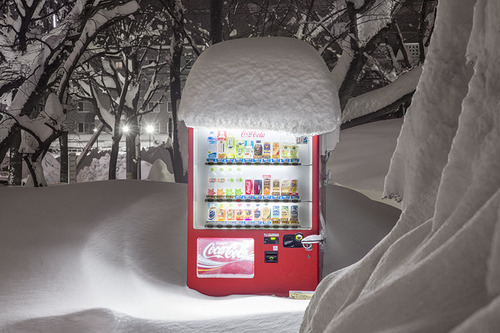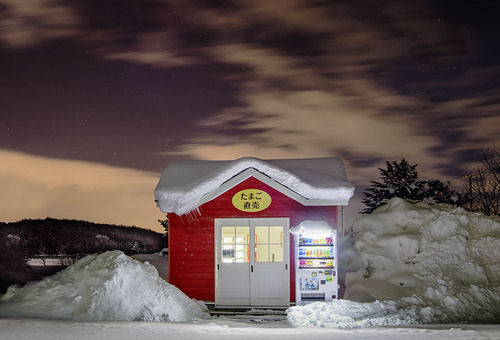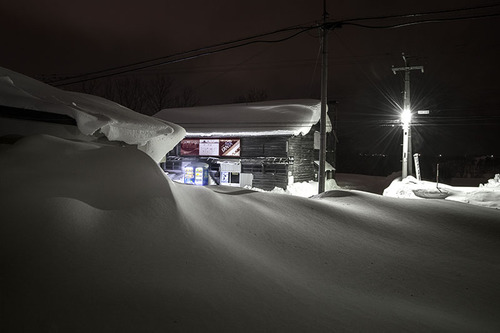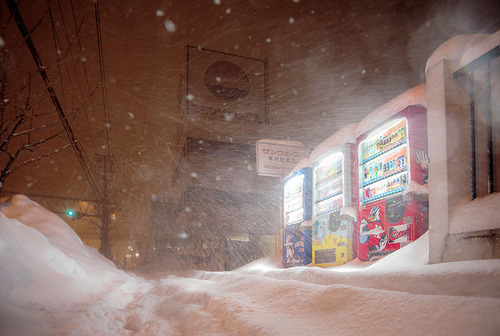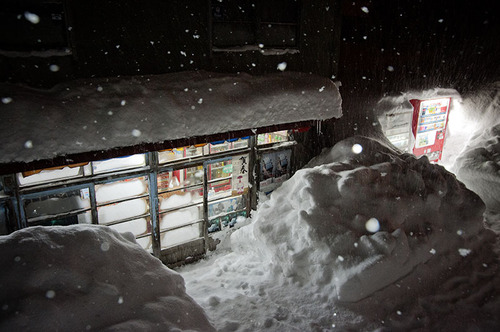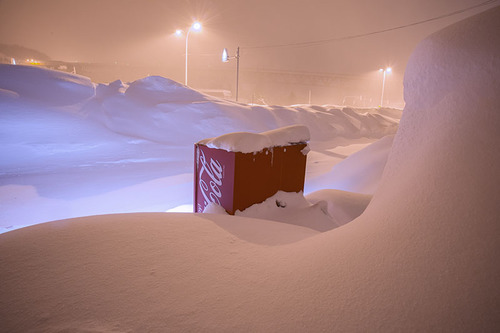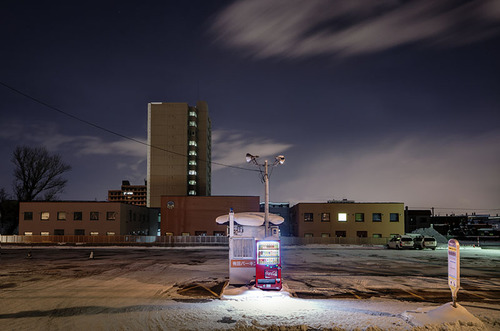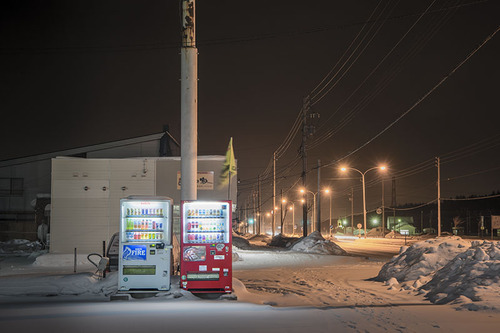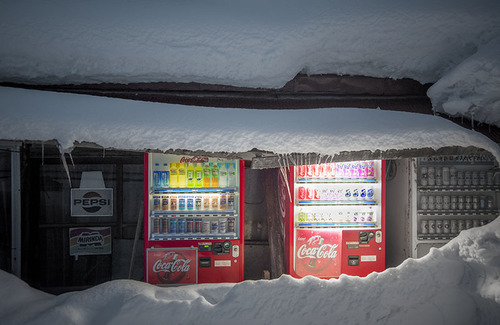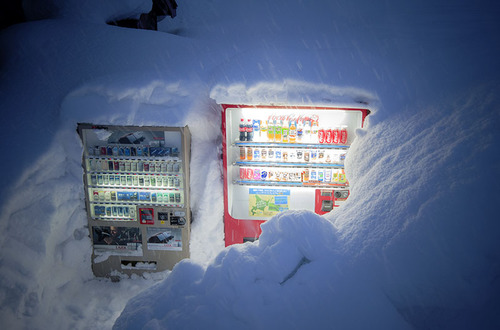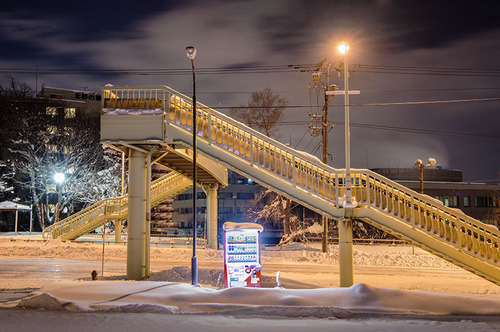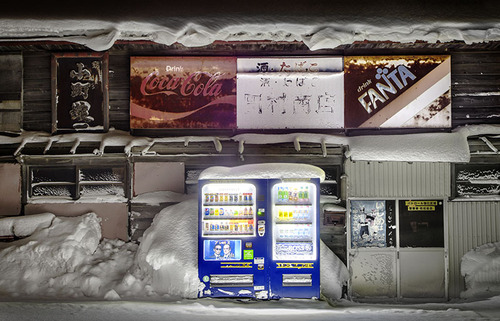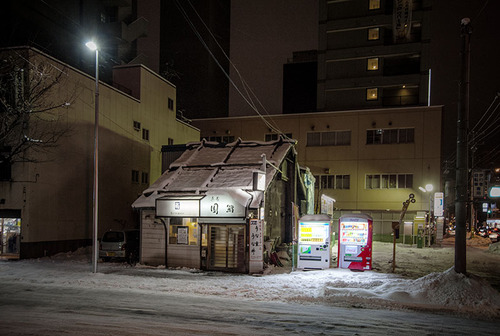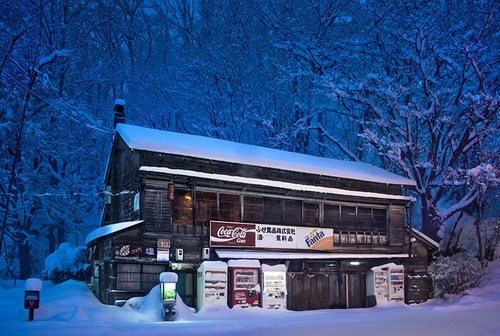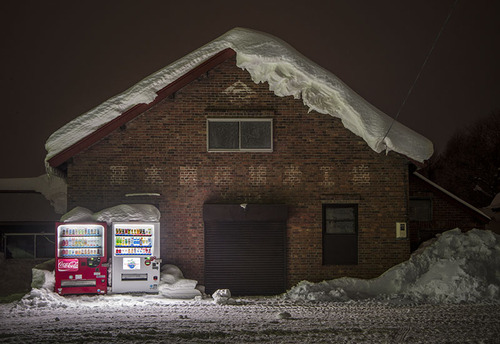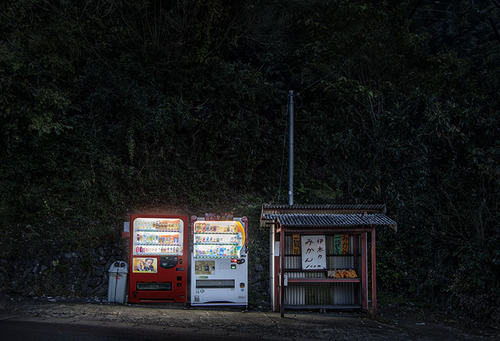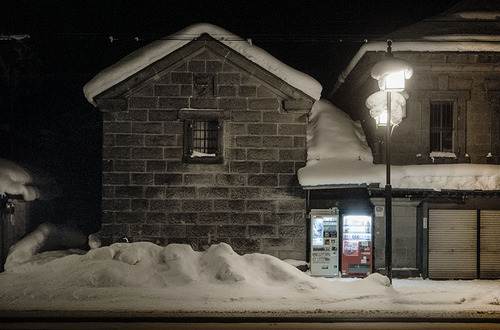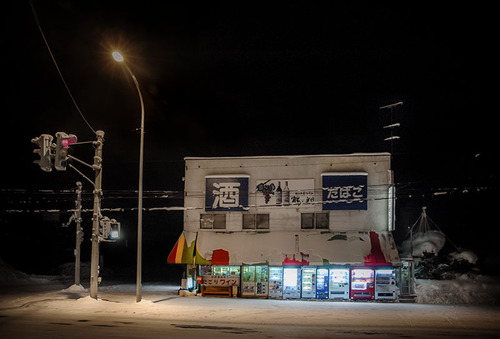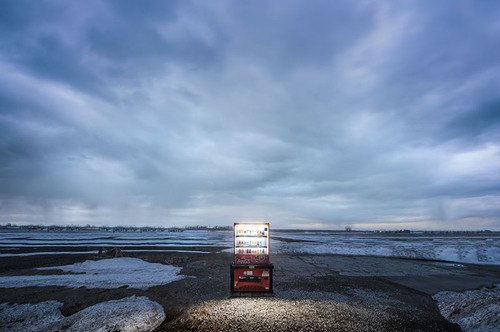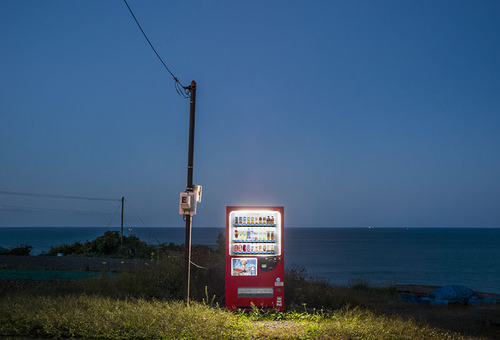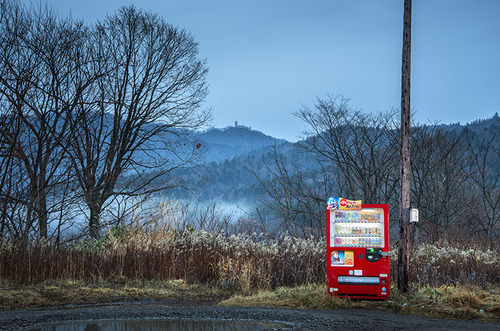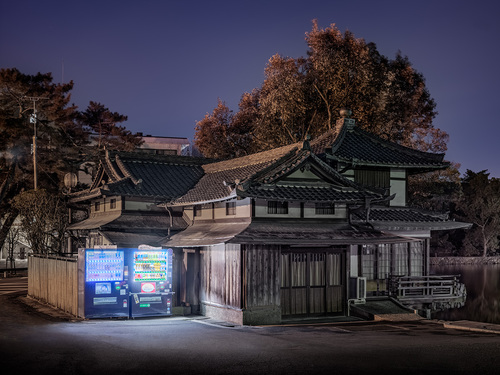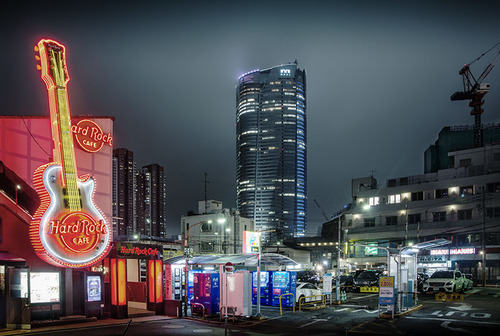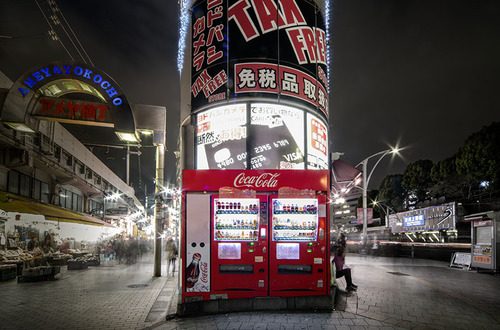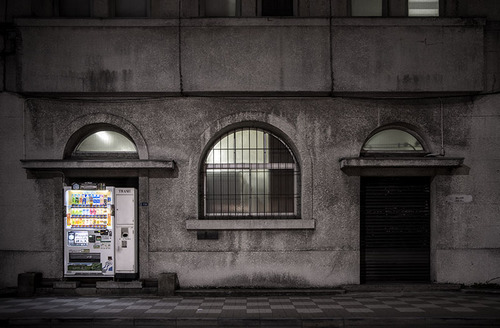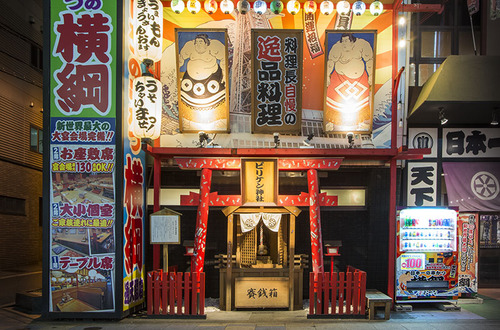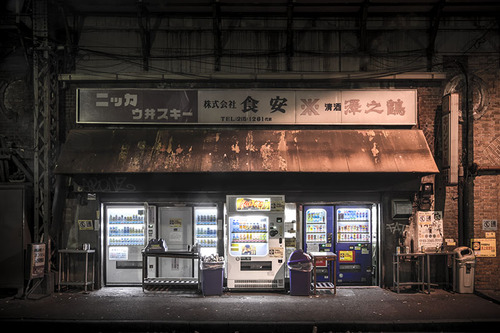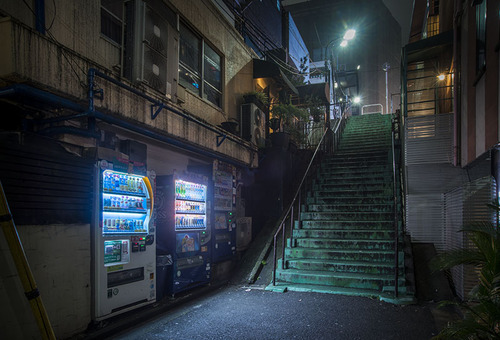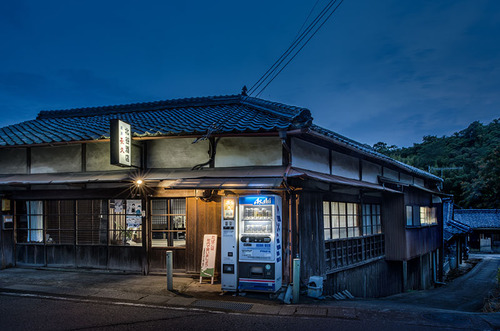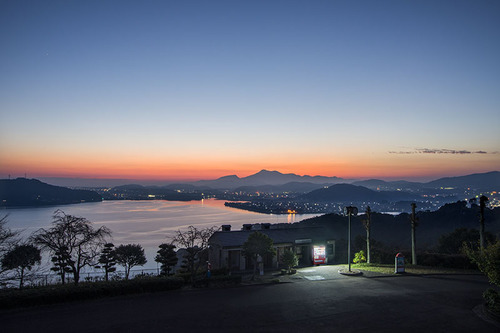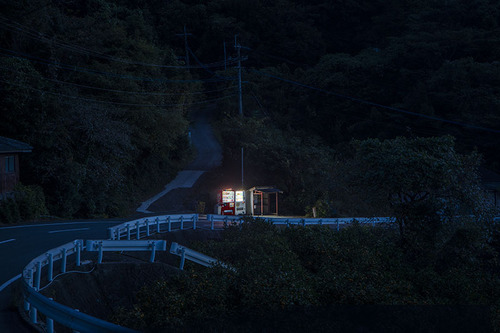Roadside Lights I
The Japanese composer Toru Takemitsu once said of John Cage's music: "Meaning is never fully distinct; it is almost alive. It takes on different forms and reveals itself uniquely to each interpreter".
In the context of my work, I hope that the viewer's interpretation will transform the concrete image—the landscape with vending machine—into the abstract, so that the meaning can break free from the conventions of photography and remain indistinct and vivid.
My encounter with vending machines began when I lived in Wakkanai, the northernmost city in Japan. Winters in the north are harsh, with blizzards so strong that the snow seems to fall upwards. Once, while driving in one of these blizzards, the road disappeared behind the snow and I completely lost my sense of direction. But then I saw the familiar glow of the vending machines by the side of the road. They let me know where I was going. Since then, vending machines have taken on a special meaning for me.
Vending machines are a common sight in Japan. They are usually stocked with hot or cold drinks and can mostly be found in cities and suburbs. They are also, in and of themselves, a sign of Japan's safety. In many Western countries and cities, I have been told, these scenes with vending machines would be unimaginable.
I think you can glimpse in these scenes a certain part of the collective subconscious that underlies Japanese society—the belief in the goodness of others and in working for the benefit of others, even if it may go unnoticed. In these landscapes, the vending machines become models of humanity; at the same time, they reflect the trust people place in inanimate machines and the idea of them as partners. Perhaps this sensibility is indeed a reflection of the Japanese worldview, and is less common in the Western hemisphere, whose culture has been shaped by a belief in an absolute God. The difference in the relationship between humans and machines is also evident in art and popular culture, for example in the way robots are portrayed in the 1927 German film Metropolis and in the Japanese work Astro Boy: in Metropolis they are enemies, in Astro Boy friends.
The landscapes with vending machines are themselves diverse and manifold. But the core—the origin and the reason I continue—remains the sight of the vending machine glowing brightly in the snowy night. Lately I have begun to feel that this may be connected, on a deeper level, to my own upbringing. In the 1970s, the American geographer Yi-Fu Tuan described a concept he called topophilia. It is the idea that people cannot completely escape their own origins; that their lives are constantly influenced by their geographical past. After more than ten years of working on this project, I have only recently understood that experiences from my childhood unconsciously shape the work I create.
As a child, I lived through many harsh winters in a house with no insulation. And yet, perhaps contradictorily, I remember those winters as profoundly beautiful. One moment I remember was being enveloped by a powerful blizzard. Everything around me became snow and I found myself in another world, one that I would describe as "desolate beauty". Because of these memories of mine, going out to photograph on snowy nights also feels like a journey into my past, as if I am replaying past experiences and reaffirming my identity.
I sense a kind of dutifulness in the machines that goes beyond that of humans. They work tirelessly, regardless of their circumstances. Even when buried in snow, they continue to glow and function. As machines, they are not subject to our sentimental morality. Nor do they know despair. And yet, paradoxically, their warm light glowing in the snow continues to give me hope.
I think there is much to be seen and found in these landscapes. As long as they connect with the viewer, with their memories and experiences, they may lead to new and deeper layers of meaning. In this sense, I hope that these landscapes, as photographic works, will remain indistinct.
